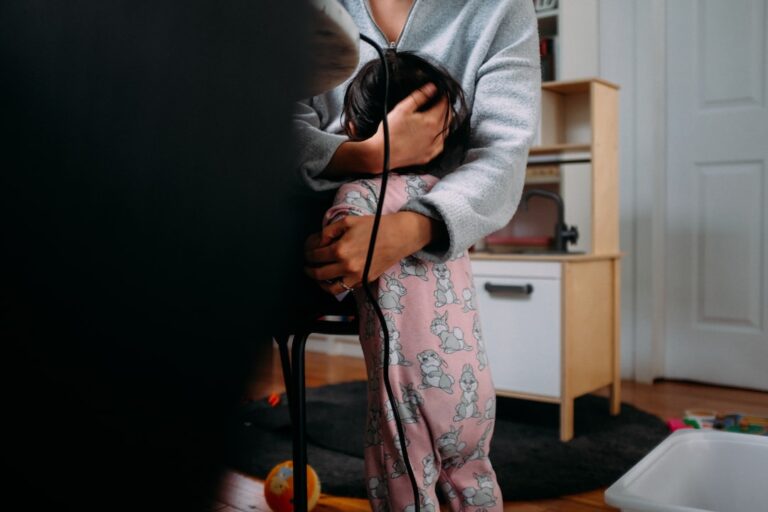Attachment Styles: What’s Yours?
Growing up, I always knew that the way I was raised would have a lasting impact on my own parenting journey. The concept of attachment styles has always fascinated me, as it explores the unique bond between parents and children. As a mother, understanding my attachment style and its effects on my child’s development is crucial. In this article, I will delve into the different attachment styles and provide insights on how we can foster healthy attachments with our little ones.
The Importance of Attachment
Attachment refers to the emotional bond that develops between a child and their primary caregiver, often the mother. This bond acts as a blueprint for all future relationships, shaping a child’s self-esteem, emotional regulation, and overall well-being. Research suggests that a secure attachment lays the foundation for healthy social and emotional development, while insecure attachments can lead to various challenges in adulthood.
The Four Attachment Styles
Psychologist Mary Ainsworth identified four primary attachment styles: secure, anxious-ambivalent, avoidant, and disorganized. Each style reflects the patterns of interaction between a caregiver and a child. Let’s explore these styles in detail:
- 1. Secure Attachment: Children with secure attachment styles feel confident, loved, and safe in their caregiver’s presence. They trust that their needs will be met and readily explore their surroundings. They seek comfort from their caregiver when needed and are able to form healthy relationships later in life.
- 2. Anxious-Ambivalent Attachment: Children with an anxious-ambivalent attachment style often feel anxious and uncertain about their caregiver’s availability. They may become clingy, seeking constant reassurance and approval. These children may struggle with self-esteem and have difficulty trusting others.
- 3. Avoidant Attachment: Children with an avoidant attachment style tend to be emotionally distant and exhibit self-reliant behavior. They may avoid seeking comfort from their caregiver and appear independent. These individuals may have difficulty forming close relationships and struggle with intimacy.
- 4. Disorganized Attachment: Children with a disorganized attachment style experience inconsistent and unpredictable caregiving. They may display contradictory behaviors, such as seeking closeness and then avoiding it. These individuals often struggle with emotional regulation and may face challenges in forming stable relationships.
Nurturing Healthy Attachments
As a mother, it is essential to create a nurturing environment that promotes secure attachment. Here are some valuable tips to cultivate healthy attachments with your child:
- Show Unconditional Love: Expressing love and warmth consistently helps your child feel secure and valued. Offer affection, praise, and positive reinforcement regularly.
- Develop Trust: Be dependable and reliable in meeting your child’s needs. Follow through with your promises and provide a safe space for open communication.
- Practice Responsive Parenting: Be attuned to your child’s cues and respond promptly to their needs. This helps them develop a sense of trust and security in your presence.
- Encourage Exploration: Foster an environment that allows your child to explore their surroundings and develop independence. Offer support and guidance as they navigate new experiences.
- Create Rituals and Routines: Establishing regular routines and rituals helps your child feel secure and builds a sense of predictability in their daily lives.
- Be Mindful of Your Own Attachment Style: Reflect on your own attachment style and how it may influence your interactions with your child. Seek support or therapy if needed to overcome any challenges.
Frequently Asked Questions
- 1. Can attachment styles change over time?
- While attachment styles typically form in early childhood, they are not set in stone. With self-awareness and effort, individuals can develop more secure attachment styles and improve their relationships.
- 2. What if my child has an insecure attachment style?
- If your child displays signs of an insecure attachment style, it is important to provide a loving and supportive environment. Seek guidance from professionals, such as therapists or pediatricians, who can offer strategies to promote secure attachment.
- 3. How can I promote secure attachment with my older child?
- Even if your child is older, the principles of secure attachment still apply. Focus on building trust, open communication, and providing emotional support. Engage in activities that strengthen your bond, such as spending quality time together.
Why Montessori Preschools Are the Best Choice for Personalized Learning
Nurturing Your Child’s Emotional Well-Being: A Mother’s Guide to Understanding and Supporting Anxious Avoidant Attachment
9 Essential Positive Parenting Tips: A Comprehensive Guide to Nurturing Your Child’s Growth and Happiness
How to Handle Backtalking Kids: Expert Strategies for Effective Communication
11 Essential Things Kids Need From Their Parents – Secrets to Happy and Successful Children
Child Temperament: Navigating Parenting Challenges with an Easy or Difficult Baby
Healing Disorganized Attachment: 7 Signs, Causes & Effective Strategies
Reinforcement vs Punishment: The Ultimate Guide to Positive Parenting Techniques
Understanding Token Economy Psychology: A Guide for Promoting Positive Behavior in Children
Understanding Attachment Bond: The Key to a Strong Parent-Child Connection
10 Effective Tips for Parenting a Rebellious Teenager
Dealing with Angry Parents: Effective Strategies and Tips
7 Reasons Why Children Lie and How to Deal with It
Why Emotion Dismissing Parenting Is Harming Your Child’s Emotional Well-being
Manipulative Parents: Signs, Effects, and How to Protect Your Child’s Well-Being
Understanding attachment styles is a valuable tool for every parent. By recognizing our own attachment style and actively working towards fostering secure attachments, we can provide our children with a solid foundation for their future relationships and overall well-being. As a mother, I strive to create a loving and supportive environment that allows my child to thrive, knowing that the attachment we share will shape their journey through life.
















